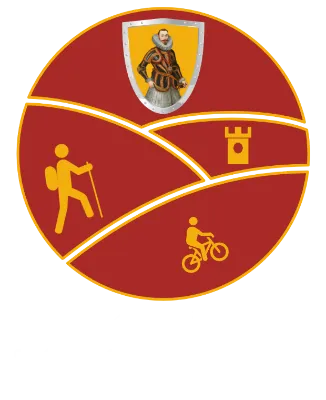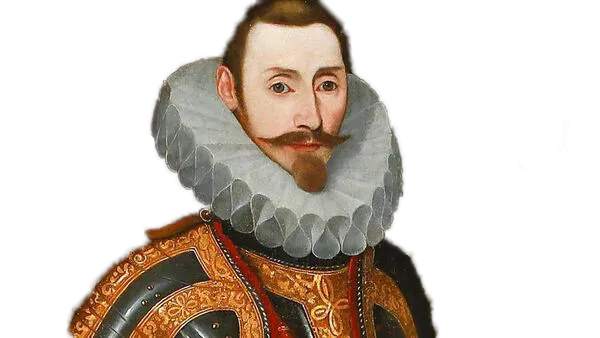O'Sullivan Beare in Tipperary
Image use by kind permission of The Last Prince - O Sullivan Beare
O'Sullivan Beare enters Tipperary
At Kilmallock, the White Knight and his mercenaries attacked. They were then attacked at the rear by the previous day's assailants but succeeded in avoiding a clash. Chief town of the Golden Vale is Kilmallock, capital of the Earls of Desmond. Mercenaries of the White Knight, the Gibbons, men from Limerick City and some Crown forces, in all making up more a mob than an army, came upon O' Sullivan's host, making for the mountains. This battle may have been in the region of Knockany, Hospital or Emly. It was by far the fiercest battle that the refugees had suffered thus far.
O'Sullivan Beare arrived at Kilnamanagh at night and found fires lit due to the severe winter. The soldiers were hungry and fed on plants, roots, and leaves. The enemy's musketeers engaged with the rear ranks as they marched towards Donohill fort. The soldiers stormed the fort to get food and consumed whatever was prepared. They then fed on meal, beans, and barley grains. They covered about twenty miles and halted in Solloghead village while carrying their packs.
At dawn, they traveled towards Slievefelim, where a larger force under Ormond's command had blocked their path. They were alarmed upon discovering this, but due to the enemy's ability to force them into combat, they decided to make the first move. The enemy became fearful upon seeing this and withdrew from the area.
Under orders from O'Sullivan, Thomas Burke and Daniel O'Malley led a group of sixty men on a detour to search for provisions and supplies while experiencing hunger.
The group was suddenly attacked by the enemy. Daniel O'Malley and twenty men were killed, Thomas Burke was captured, and the rest were routed. Fortunately, O'Sullivan came and rescued the remaining men. Thomas had broken his bonds and was fleeing from the enemy, but had lost his sword, pike, and dagger.
Philip O'Sullivan, a 1st cousin of Donal Cam,who was sent to Spain as a refugee with Donal's young son and educated in Spain, wrote a detailed account of the retreat in "Historiae Catholicea Compendium" publish in 1621.
"He halted in the village of Latteragh, and threw his men into a rather small church and it's enclosure. There was in this village a fort from which he was annoyed the whole night with the firing and salliers of the garrison. He withstood the attack from the fort and monentarily awaited with drawn swords prepared muskets and couched pikes, a large crowd of the enemy assembled not far from the camp; the men going on sentry and to sleep in turns.
O'Sullivan Beare Final Battle in Tipperary
O'Sullivan Beare stayed at Lackeen instead of Lorrha. He camped by an ancient church linked to Lorrha, which may have been controlled by MacEgan supporters. The MacEgans were Brehon Law professors to all Ireland, with a lengthy education and secret language. In the 14th century, a MacEgan compiled Leabhar Breac, but by the 16th century, their talents declined. In 1602, they supported the English, which may explain why O'Sullivan avoided Lorrha.
When traveling towards the Shannon, O'Sullivan might have avoided Lorrha. The location where the refugees stayed before crossing the river is not clear. According to Philip O'Sullivan, they hid in the forest of Brosna between the Brosna river and the Shannon. However, others believe they camped at the wooded ridge of Portland near the present Portumna bridge, or near Redwood castle, occupied by Queen's sheriff Donnchadh MacEgan.
O'Sullivan Beare sent out scouts to assess the possibility of crossing the river using boats or ferries. The scouts reported that all boats and ferries had been taken away, and that ferrymen in the vicinity had been instructed not to help the fugitives. Donnchadh MacEgan was identified as the person responsible for issuing these instructions.
Historical records suggest that the Shannon river was once situated closer to Redwood castle, with various obstacles such as swamps and thickets in between. The MacEgans reportedly observed the O'Sullivan Beare's camp in the vicinity of the river and strategized to launch an attack once the party had traversed the water.
0'Sullivan Beare and his group were trapped with the enemy closing in. They had to cross the river or fight MacEgan's forces. But the boats were gone, and they were starving. Despair filled their hearts, and seventy-year-old Dermot O'Sullivan declared he'd build a ship to end their hunger. Dermot survived, went to Spain, and lived to be a hundred. He's buried in Corunna, Northern Spain.
As per tradition, the crossing occurred at White's Ford, which is currently intersected by electricity pylons over the Shannon. The region is known as poll na gcapall, which translates to the field of horses, and is thought to be the site where O. Sullivan Beare's troops killed and consumed their horses, employing their hides to build boats.
Philip O'Sullivan provides an account of the construction of traditional boats using osiers and wet skins. Two boats were constructed, one resembling long black currachs typically found in the west of Ireland, while the other resembled a coracle made of osier with a circular bottom and high sides covered in horse skin. One boat was built under the supervision of Dermot of Dursey, while the other was constructed by the seafaring mercenaries, the O'Malleys.
The currach was intricate. Two rows of osiers were placed opposite each other, with one end stuck in the ground and the other ends bent to meet. Cords secured the osiers together. Solid planks were attached to the frame, with seats and cross beams inside. The osier and timber skeleton was covered with horse skins and fitted with oars and dowels. The keel was flat to avoid rocks and stones. The boat measured 26 feet long, 6 feet wide, and 5 feet deep, with a slightly higher prow to combat the tide.
Following the deaths of numerous horses, the refugees were able to have a satisfying meal. Notably, O'Sullivan Beare, his uncle Dermont, and a man named Dermont Huallachain opted to abstain from consuming the horsemeat due to personal preference, despite it being a popular food choice in Ireland during that time.
The boats took two days to build. They were constructed inside a fortified palisade on a bank inside a ditch fortified with timber. The activities of hundreds of people could not have gone unnoticed despite being hidden in the woodland. MacEgan did not attack them, possibly because he didn't want to attack fellow Irishmen or he thought depriving them of ferries and boats was enough. It's also likely he didn't consider his garrison strong enough to face O'Sullivan Beare's seasoned soldiers. He waited until they were divided by the river before moving against them.
Crossing the Shannon
On January 7, 1663, the Shannon River was flooded and a quarter mile wide. Men carried boats on their shoulders to the river and soldiers ferried across, thirty at a time. Tragically, the coracle of the O'Malleys overturned in the current, drowning all ten inside. They had made paddles to steer, but the darkness made it difficult.
The currach was successful, going back and forth all night with a full load each time. By daybreak, most soldiers had reached Galway. Thomas Burke led a group of twenty pikemen and musketeers to protect women, non-combatants, and baggage on the Tipperary side. The women and civilians followed the vanguard and rearguard. Troops on the Connaght bank were attacked, but Burke and his men were guarding the camp followers well.
At dawn, Burke was loading civilians and baggage onto the currach after multiple crossings. Mac Egan and his small force arrived with the intention of robbing and destroying supplies, but instead killed the guards and drove women into the river.
Burke initially left MacEgan and his group alone. But when they started stealing and murdering, Burke fought back. His soldiers won, and fifteen MacEgans, including Donnchadh, died. The Four Masters considered this a sad and preventable incident, holding MacEgan responsible for his own demise. They claimed that MacEgan had attacked and shot at O'Sullivan and his followers, resulting in his death.
The firing caused people to come and take things for themselves. Burke and his group decided to leave on a crowded boat, which sank near the bank. Some made it to shore, others were captured by the mob, and a few hid. A few even swam across the cold river. Fortunately, the remaining people were able to fix the boat and cross safely.
So O'Sullivan Beare had left Tipperary behind him and continued on his journey north to Brian Oge O'Rourke's castle in Breifne on 14 January 1603.
After a fortnight's hard marching and fighting, only 35 of the original 1,000 remained.

© 2023 In Tipperary, All Rights Reserved.
Web Design by Pixelweb Design

